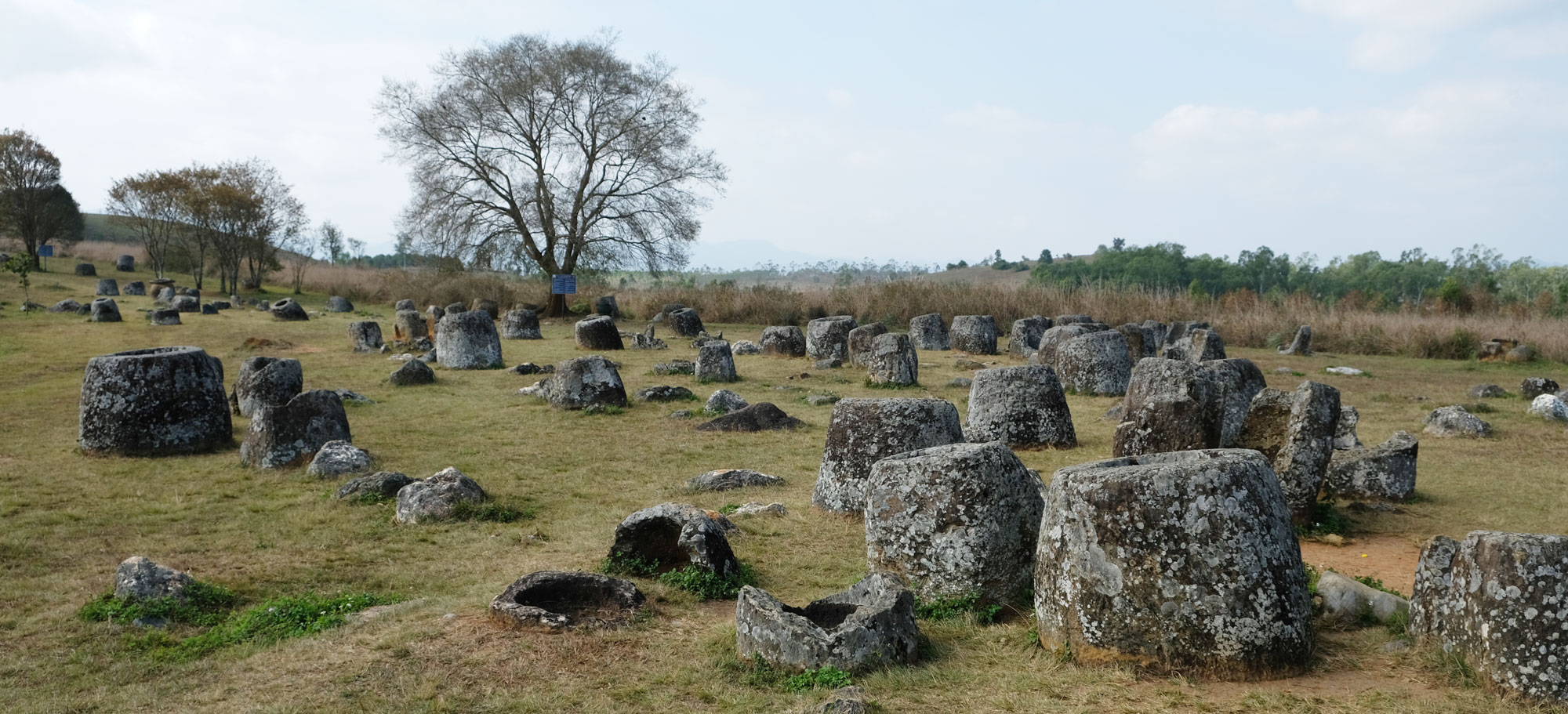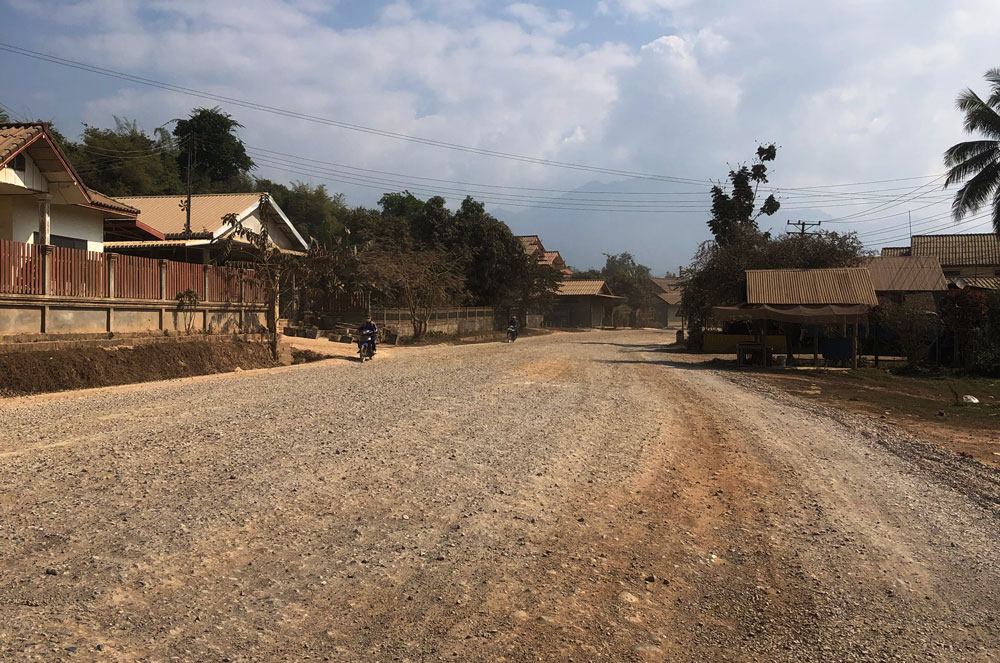Not Just Plain Jars
The plain of Jars is a megalithic archaeological landscape in Northern Laos, in an area that was heavily bombed during the second Indo-China War. The area consists of thousands of stone jars scattered around the valley and at the foothills of the central plain.
The hundreds of giant stone jars, some as large as three metres high, are strewn all over the plateau, carved out of solid hunks of rock from surrounding mountains. From the Visit Lao website we read that no one really knows why they are there, but many theories subsist. They range from wine storing to burial sites. French geologists and amateur archaeologist Madeleine Colani did extensive excavation in the early 1930s and found material to support a crematorium theory. If so, it will be an Iron Age burial site – some archaeological finds indicate as old as 2000 B C.–representing ritualistic practices with extended history spread from the Angkor period to the Hindu and Buddhist religious impacts.
Additionally, apart from being one of the largest opium poppy cultivation areas – largely for local consumption – in Laos, the area is also one with a large amount of unexploded ordnance (UXO). These are explosives such as bombs, bullets, shells, grenades, land mines etc. that did not explode during the war and is left dangerously behind in peace time. All seventeen provinces of Laos suffer UXO contamination, but Xiang Khoaung is the second most bombed province, and the UXO contributes to a cycle of poverty. A quarter of all villages are contaminated, according to the Plain of Jars Visitor Centre near Phonsavan in the Xieng Khoung province.
During the war the US dropped 270 million bombs on Laos, and still nearly a third of these failed to detonate and remain a life-threatening hazard to the local people. There was a bombing mission every eight minutes, 24 hours a day, for nine years. Since the war ended in 1974 around 20,000 people are victims of the US bombing raids. At Jar Site 1, one hundred and twenty-seven unexploded ordnances have been unearthed.
Apart from a ten-kilometre stretch, the whole route to Phonsavan is paved with only the occasional pot hole. It twists and turns though, so any hope of speeding is to no avail. We did manage to keep an average of 45 to 50 kilometres an hour, but you have to be vigil at all times as every village you drive through is full of chicken and piglets, dogs and cats, cows and children on the roads. Motorcyclists are another nuisance, as they have a tendency to overtake you on the inside of your car. Bumping into one of them can get you into trouble, regardless of whom is to blame.
Driving in the dark is not to recommend, so just before sunset we booked into Riverside Guesthouse in the village of Thathom for 100,000 kip for a double. Located around 100 km from Phonsavan and the famous jars, the village is virtually dead by 8 pm. Dinner had to be early, but not much choice apart from chicken and vegetable with rice. Climate in the area is not too hot in the cool season (down to below 10 degrees Celsius) and not too wet in the rainy season. So even if the temperature hovers around 35 in the capital in January, do bring a jacket for the cool evenings. When visiting the sites of the jars, you can also feel a cool breeze. If there is no clear sky for the sun to warm you up, it feels a bit nippy.
We returned to Vientiane via Vang Vieng, the small backpacker town on the banana pancake trail famous for its magic mushroom omelettes, reruns of “Friends” and Western youngsters meeting an early demise by challenging the forces of nature. As we both are way past the coming of age, a breakfast at Parisien Café was enough for a break. A baguette with fried eggs and a proper cup of coffee was very welcoming in the early hours. The area is also famous for its stunning landscape, we found the most intriguing landscapes of the region along the road before entering Vang Vieng from the north.
Coming from the north, the road from the junction at Phou Khoun is in most part in a dismal condition. The 57 km journey from the small town of Kasi, where we spent our second night, to Vang Vieng took us one and a half hour. On the way we could see the construction of the new Chinese built high speed train, built partly on ground with neat decoration and plants, partly on pillars and partly in tunnels through the mountains. In stark contrast to the potholed road, highway number 13, the main thoroughfare from South East Asia to China.
[February 2019]



